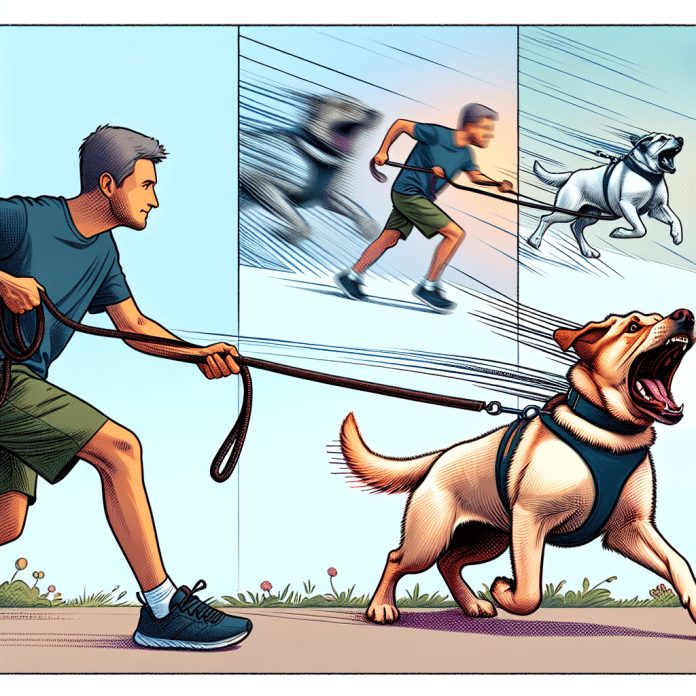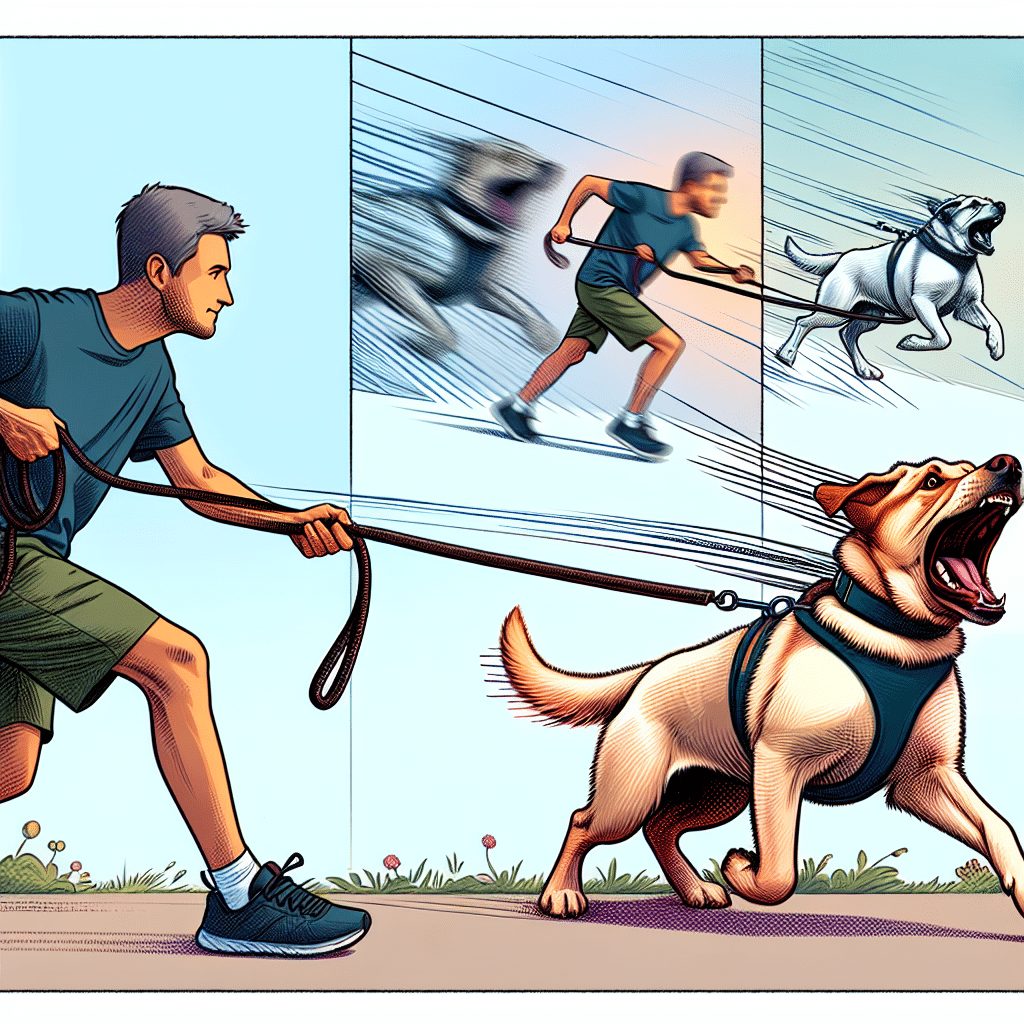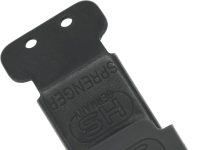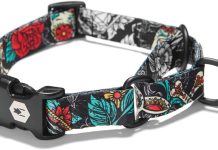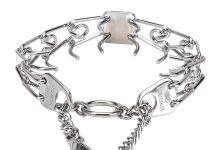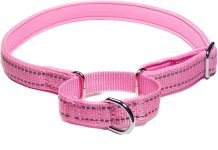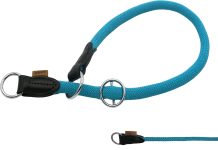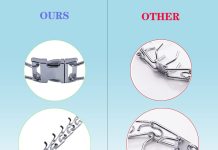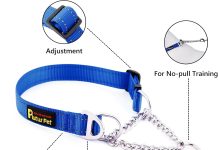Are you tired of feeling like you’re being dragged around every time you take your dog for a walk? If so, you’re not alone. Many dog owners struggle with their furry friends constantly pulling in a harness, making walks more of a battle than a leisurely stroll. But fear not! There are effective ways to teach your dog to stop pulling and make your walks enjoyable again. By employing a few simple techniques and implementing consistent training, you’ll soon find yourself confidently walking side by side with your well-behaved pup. So, let’s get started on the path to stress-free walks together!
Understanding the Reasons for Pulling
Table of Contents
Identifying the Trigger
When it comes to understanding why your dog pulls on the leash, it’s essential to identify the trigger behind this behavior. Dogs may pull for various reasons, such as excitement, fear, or simply showing natural behavior instincts. By observing your dog’s body language and paying attention to their surroundings, you can start to identify what triggers their pulling behavior.
Communication and Body Language
Effective communication with your dog is key to solving the issue of pulling. Dogs often use body language to communicate their emotions and intentions. By learning to read your dog’s body language, you can better understand their state of mind while on a walk. Signs of stress or anxiety, such as a tense body posture, raised hackles, or avoidance behavior, can help you recognize triggers and address them appropriately.
Puppies and Curiosity
Pulling is a common behavior in puppies, especially as they are naturally curious and eager to explore their environment. Puppies may also have a surplus of energy, which can contribute to excessive pulling. It’s important to start training early to teach your puppy proper leash manners and prevent these behaviors from becoming ingrained habits.
Breed Characteristics
Different dog breeds have unique characteristics and tendencies that can influence their pulling behavior. For example, working breeds like Siberian Huskies or Alaskan Malamutes have a strong instinct to pull due to their history of sled pulling. Understanding your dog’s breed characteristics can provide insight into why they may be more prone to pulling and help guide your training approaches.
Lack of Exercise and Mental Stimulation
Dogs who do not receive adequate exercise and mental stimulation may resort to pulling as a way to release pent-up energy or alleviate boredom. Regular exercise and engaging activities like puzzle toys or obedience training can help satisfy your dog’s physical and mental needs, reducing their tendency to pull during walks.
Choosing the Right Harness
Front-Clip Harnesses
Front-clip harnesses are designed with the leash attachment on the dog’s chest area. These harnesses work by redirecting a dog’s pulling force towards the side, causing them to naturally turn towards you. Front-clip harnesses are particularly effective for dogs who are persistent pullers, as they discourage pulling by making it more difficult to move forward.
Back-Clip Harnesses
Back-clip harnesses have the leash attachment on the dog’s back, similar to a traditional collar or leash. While convenient, back-clip harnesses may not be ideal for dogs prone to pulling, as they can actually encourage the behavior by allowing the dog to lean into the pressure and pull against it.
Head Halters
Head halters, such as Gentle Leaders or Halti Harnesses, are designed to gently and effectively control a dog’s head and nose. By controlling the direction of the head, head halters can offer significant control over a dog’s pulling behavior. However, it’s important to introduce and acclimate your dog to the head halter gradually, as some dogs may initially find them uncomfortable.
No-Pull Harnesses
No-pull harnesses are specifically designed to address pulling behavior. These harnesses typically feature a front-clip attachment and additional design elements to discourage pulling. The design of no-pull harnesses ensures that the leash is positioned in a way that naturally redirects a dog’s pulling force, helping to alleviate pressure and reduce the urge to pull.
Proper Fit and Size
Regardless of the type of harness you choose, it’s crucial to ensure a proper fit and size for your dog. Ill-fitting harnesses can cause discomfort, restrict movement, and even exacerbate pulling behavior. Measure your dog’s girth and consult the manufacturer’s sizing chart to select the appropriate harness size. Adjust the straps and buckles to achieve a snug yet comfortable fit that allows for free movement.
Training Techniques to Stop Pulling
Positive Reinforcement
Positive reinforcement is a highly effective training technique that involves rewarding desired behaviors. When it comes to teaching loose leash walking, positive reinforcement involves praising and treating your dog when they walk calmly by your side without pulling. By associating walking politely with positive rewards, your dog will gradually learn to choose the desired behavior over pulling.
Using Treats and Rewards
Treats and rewards play a significant role in training your dog to stop pulling. By using high-value treats or toys, you can motivate your dog to focus on you and maintain a loose leash. Make sure to provide treats or rewards promptly when your dog exhibits the desired behavior to reinforce their understanding of what you expect.
Clicker Training
Clicker training can be a helpful tool in teaching your dog loose leash walking. This method uses a distinct clicking sound to mark desired behavior and indicates to your dog that a reward is coming. By pairing the clicker sound with treats and rewards, you can communicate clearly with your dog and reinforce their understanding of what you want them to do.
Desensitization and Counterconditioning
For dogs with specific triggers that cause pulling, desensitization and counterconditioning techniques can be effective. By gradually exposing your dog to their triggers in controlled settings and pairing those triggers with positive experiences, you can help them overcome their fear or anxiety. This process helps create new positive associations and reduces the likelihood of pulling behavior.
Regular and Consistent Training Sessions
Consistency is key when it comes to training your dog to stop pulling. Make sure to set aside regular training sessions dedicated to loose leash walking, focusing on reinforcing desired behavior and effectively communicating your expectations. By incorporating training into daily walks, you provide ongoing opportunities for your dog to practice and learn.
Teaching Loose Leash Walking
Start Indoors or in a Controlled Environment
When initially teaching loose leash walking, it can be helpful to start indoors or in a controlled environment with minimal distractions. This controlled setting allows you to introduce the concept of walking calmly on a leash without the added challenge of outdoor distractions. Begin by rewarding your dog for walking next to you with a loose leash, taking small steps and gradually increasing the difficulty level.
Encouraging Attention and Focus
Building your dog’s attention and focus on you is crucial for teaching loose leash walking. Use verbal cues or prompts to redirect your dog’s attention towards you, rewarding them for maintaining eye contact and staying by your side. Engage your dog in interactive games or training exercises that encourage focus and strengthen the bond between you and your furry friend.
Using Verbal Cues and Commands
Verbal cues and commands can be powerful tools for teaching loose leash walking. Utilize consistent verbal cues such as “heel” or “let’s go” to signal to your dog that they should walk calmly by your side. Pair these cues with treats or rewards to reinforce the desired behavior and create a clear association.
Implementing Leash Corrections
In some cases, gentle leash corrections may be necessary to address pulling behavior. These corrections involve a quick, firm tug on the leash to disrupt your dog’s pulling motion and redirect their attention back to you. However, it’s important to use leash corrections sparingly and only when necessary, focusing primarily on positive reinforcement and reward-based training methods.
Gradual Progression to Outdoor Walks
Once your dog has successfully mastered loose leash walking in controlled environments, it’s time to gradually introduce the training to outdoor walks. Start in quiet areas with minimal distractions and gradually increase the level of difficulty as your dog becomes more comfortable. Remember to reward and reinforce desired behavior consistently, providing positive experiences during outdoor walks to encourage continued progress.
Managing the Pulling Behavior
Avoiding Reinforcement of the Pull
It’s important to avoid inadvertently reinforcing the pulling behavior during walks. When your dog pulls, avoid moving forward and stand still until they release tension on the leash. Once your dog returns to a loose leash, praise and reward them promptly. Consistently reinforcing loose leash walking and not rewarding pulling behavior helps your dog understand the desired behavior.
Limiting Distractions
Distractions can often contribute to pulling behavior. When managing pulling, choose routes and walking areas with fewer distractions, allowing your dog to focus on you and the training process. Over time, gradually increase the level of distractions to help your dog generalize their loose leash walking skills to various environments.
Changing Walking Routes
Changing your walking routes periodically can also be beneficial in managing pulling behavior. Dogs may become overly accustomed to certain patterns or routes and anticipate exciting or enticing elements ahead, leading to increased pulling. By changing the scenery and unpredictability of the walking routes, you can help break this pattern and minimize pulling tendencies.
Using Stop-and-Go Method
The stop-and-go method is a technique that can be used to discourage pulling behavior. When your dog starts pulling, abruptly stop and refrain from moving forward until they return to a loose leash. Once they release the tension and walk calmly by your side, resume the walk. This method teaches your dog that pulling leads to a loss of forward progress and encourages them to walk politely.
Utilizing Diversionary Techniques
Diversionary techniques can be useful for redirecting your dog’s attention away from pulling triggers. Carry small treats or toys during walks to divert your dog’s focus to more desirable behaviors, such as sitting or performing a trick. By engaging their attention in a positive way, you can encourage them to walk calmly by your side and reduce their urge to pull.
Addressing Specific Pulling Scenarios
Pulling Towards Other Dogs
When your dog pulls towards other dogs, it’s important to address the underlying excitement or socialization issues. Engage in controlled interactions with other dogs, gradually exposing your dog to new social situations while maintaining a loose leash. Reward and praise your dog for calm behavior, redirecting their focus to you rather than pulling towards other dogs.
Pulling Towards People
Pulling towards people can be a common behavior, especially if your dog is seeking attention or social interaction. Teaching your dog to greet people politely involves rewarding calm behavior and preventing jumping or lunging. Utilize a sit or stay command to redirect their attention and reward them for maintaining composure in the presence of people.
Pulling Towards Cars and Traffic
Pulling towards cars and traffic can be dangerous and potentially life-threatening. It’s crucial to keep your dog’s safety in mind and prevent them from engaging in this behavior. Train your dog to walk away from traffic by associating the presence of cars with positive rewards and consistently reinforcing the desired behavior of walking calmly away.
Pulling Towards Squirrels and Wildlife
Pulling towards squirrels and wildlife is a natural instinct for many dogs. To address this behavior, it’s important to redirect your dog’s attention back to you and create new associations. Use treats or toys as a distraction, rewarding your dog for focusing on you rather than the wildlife. Over time, your dog will learn to prioritize your commands over their instinct to chase.
Pulling Towards Scary or Noisy Objects
Pulling towards scary or noisy objects can be a sign of fear or anxiety. Provide reassurance and comfort to your dog in these situations, using positive reinforcement and treats to help them associate these objects with positive experiences. Gradually desensitize your dog to the objects by exposing them at a distance, gradually decreasing the distance as their comfort level increases.
Consistency and Persistence
Establishing a Routine
Consistency is vital when training your dog to stop pulling. Establish a regular routine for walks, training sessions, and reinforcing desired behaviors. Dogs thrive on predictability and routine, so by providing a consistent structure, you create an environment that encourages learning and understanding.
Maintaining Clear and Firm Communication
Clear and firm communication with your dog is essential throughout the training process. Use consistent verbal cues, body language, and reward systems to communicate your expectations effectively. Dogs respond well to clear instructions and consistent reinforcement, which builds understanding and cooperation.
Regular Training Reinforcement
Training is an ongoing process that requires regular reinforcement. Even after your dog has learned loose leash walking, continue to reinforce the behavior by incorporating training exercises into your daily walks. This consistent reinforcement helps solidify the learned behavior and maintain good leash manners in the long term.
Avoiding Reinforcement of Unwanted Behaviors
In addition to reinforcing desired behaviors, it’s equally important to avoid reinforcing unwanted behaviors. Be aware of unintentionally rewarding pulling, whether through verbal or non-verbal cues. By consistently and selectively rewarding your dog for walking calmly, you strengthen the desired behavior and discourage pulling.
Patience and Dedication
Training your dog to stop pulling requires patience and dedication. Understand that changing a behavior takes time, and progress may be gradual. Each dog is unique, so what works for one may not work for another. Stay committed to the training process and celebrate even small successes along the way.
Seeking Professional Help
Consulting a Dog Trainer or Behaviorist
In some cases, seeking professional help from a qualified dog trainer or behaviorist may be necessary. A professional can assess your dog’s specific needs, tailor a training plan, and offer guidance and support throughout the training process. They can provide valuable insights and techniques to address pulling behavior effectively.
Specialized Classes and Workshops
Specialized training classes or workshops focused on loose leash walking can be beneficial for both you and your dog. These classes offer structured training sessions, expert guidance, and opportunities for socialization with other dogs. Participating in these classes can enhance your training skills and help your dog learn in a controlled and supportive environment.
Behavior Modification Techniques
In cases where pulling behavior is rooted in underlying behavioral issues, behavior modification techniques may be necessary. A professional behaviorist can identify and address these underlying issues, creating a tailored plan to modify your dog’s behavior and reduce pulling tendencies effectively.
Tailored Solutions for Individual Dogs
Professional help allows for tailored solutions based on your dog’s unique needs and circumstances. A qualified trainer or behaviorist can assess your dog’s individual temperament, triggers, and motivations to develop personalized training techniques that will be most effective for your specific situation.
Addressing Underlying Behavioral Issues
Pulling behavior can sometimes be a symptom of underlying behavioral issues, such as anxiety or fear. A professional can help identify and address these issues, providing guidance on comprehensive behavior modification strategies that address both the pulling behavior and the root causes.
Troubleshooting and Common Challenges
Pulling Despite Training Efforts
If your dog continues to pull despite your training efforts, consider revisiting and reinforcing the fundamental steps of loose leash walking. Ensure that you’re using consistent rewards, clear communication, and appropriate training techniques. It may also be helpful to seek guidance from a professional trainer to assess any potential training gaps or obstacles.
Reactive or Aggressive Behavior
Reactive or aggressive behavior while walking on a leash can present additional challenges. It’s important to address these issues with the help of a professional trainer or behaviorist, as they require specific techniques and strategies. A professional can guide you in managing and modifying reactive or aggressive behavior appropriately.
Fear or Anxiety-Related Pulling
If your dog’s pulling behavior is driven by fear or anxiety, it’s crucial to address these underlying emotions. Counterconditioning and desensitization techniques, as well as the guidance of a professional, can be instrumental in reducing anxiety-related pulling behavior and helping your dog feel more comfortable on walks.
Pulling in Specific Environments
Dogs may exhibit pulling behavior more strongly in specific environments, such as crowded streets or dog parks. Recognizing these challenging environments and adjusting your training techniques accordingly can help manage and reduce pulling tendencies. Gradually acclimate your dog to these environments and focus on reinforcing calm and controlled behavior.
Inconsistency in Implementing Techniques
Consistency is key in training, and inconsistencies in implementing techniques can hinder progress. Ensure that all members of your household are using the same training methods and reinforcing the same behaviors. Consistency provides clear expectations for your dog and promotes quicker learning and behavior modification.
Safety Tips for Walking with a Pulling Dog
Using a Secure and Sturdy Harness
To ensure the safety and comfort of your pulling dog, choose a secure and sturdy harness that can withstand their pulling force. Look for harnesses made from durable materials, with strong stitching and reliable fasteners. Regularly inspect the harness for any signs of wear and tear to maintain its effectiveness.
Choosing Appropriate Walking Equipment
In addition to a secure harness, consider using appropriate walking equipment that provides optimal control. Non-retractable leashes, for instance, offer better control than retractable leashes and are more suitable for dogs prone to pulling. Invest in a high-quality leash made from durable material to ensure the safety of both you and your dog.
Being Aware of Your Surroundings
When walking with a pulling dog, it’s essential to be aware of your surroundings. Stay vigilant and mindful of potential hazards, such as uneven terrain, busy roadways, or other dogs. Anticipate potential triggers that may cause your dog to pull and take necessary precautions to prevent any accidents or injuries.
Avoiding Potential Hazards
To ensure your dog’s safety while walking, avoid potential hazards that may exacerbate pulling behavior. Steer clear of crowded or congested areas where your dog may become overwhelmed or anxious. Avoid exposing them to excessive heat, extreme weather conditions, or potentially toxic substances during walks.
Consider Using Additional Safety Gear
Depending on the severity of your dog’s pulling behavior or their size and strength, you may consider using additional safety gear for added control. Tools like double-ended leashes, training collars, or head halters can provide extra support and help in managing pulling more effectively. Consult with a professional trainer to determine the most suitable safety gear for your dog’s specific needs.
In conclusion, teaching your dog to stop pulling in a harness requires understanding the reasons behind their behavior, choosing the appropriate equipment, implementing effective training techniques, and managing their pulling tendencies. By being patient, consistent, and dedicated in your training efforts, you can successfully guide your dog towards polite leash manners and enjoyable walks. Remember to seek professional help when needed and prioritize your dog’s safety at all times.

